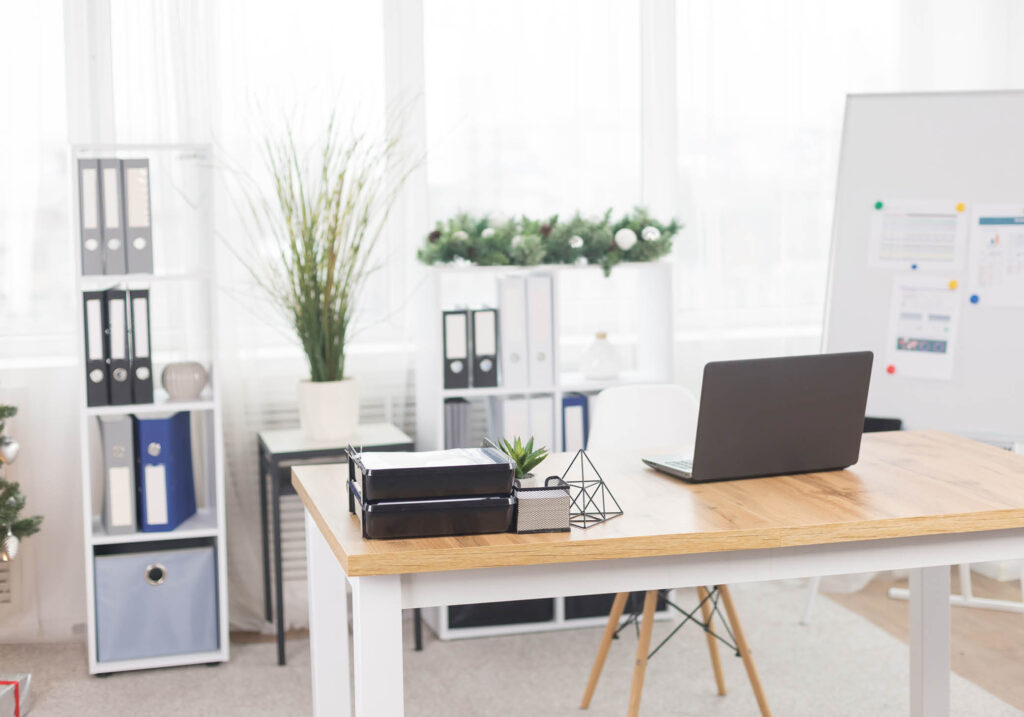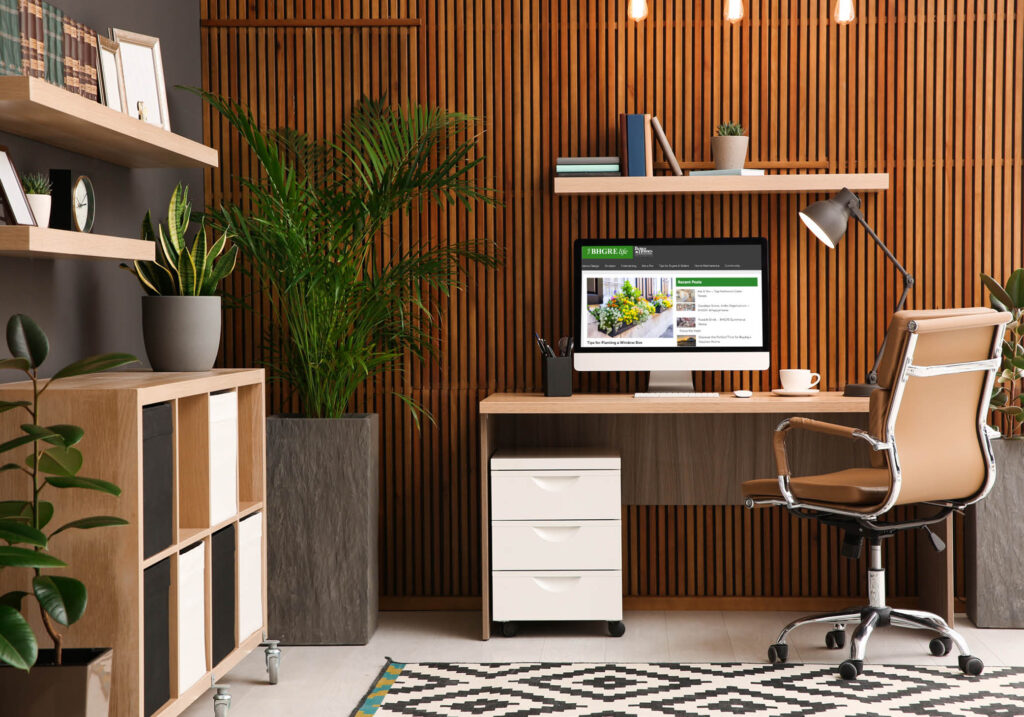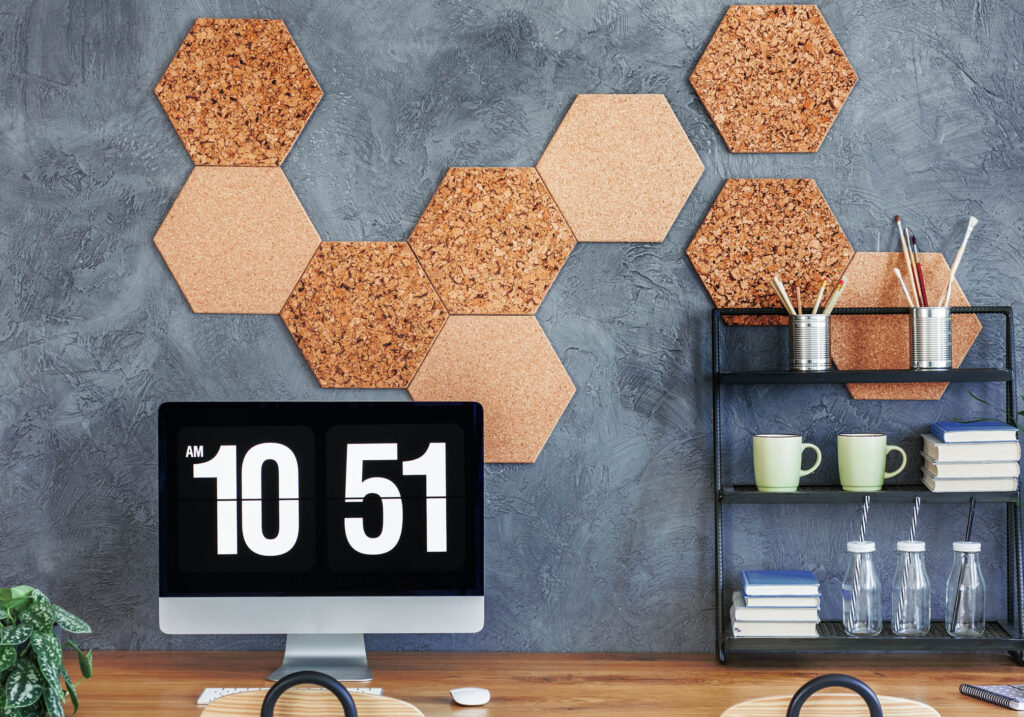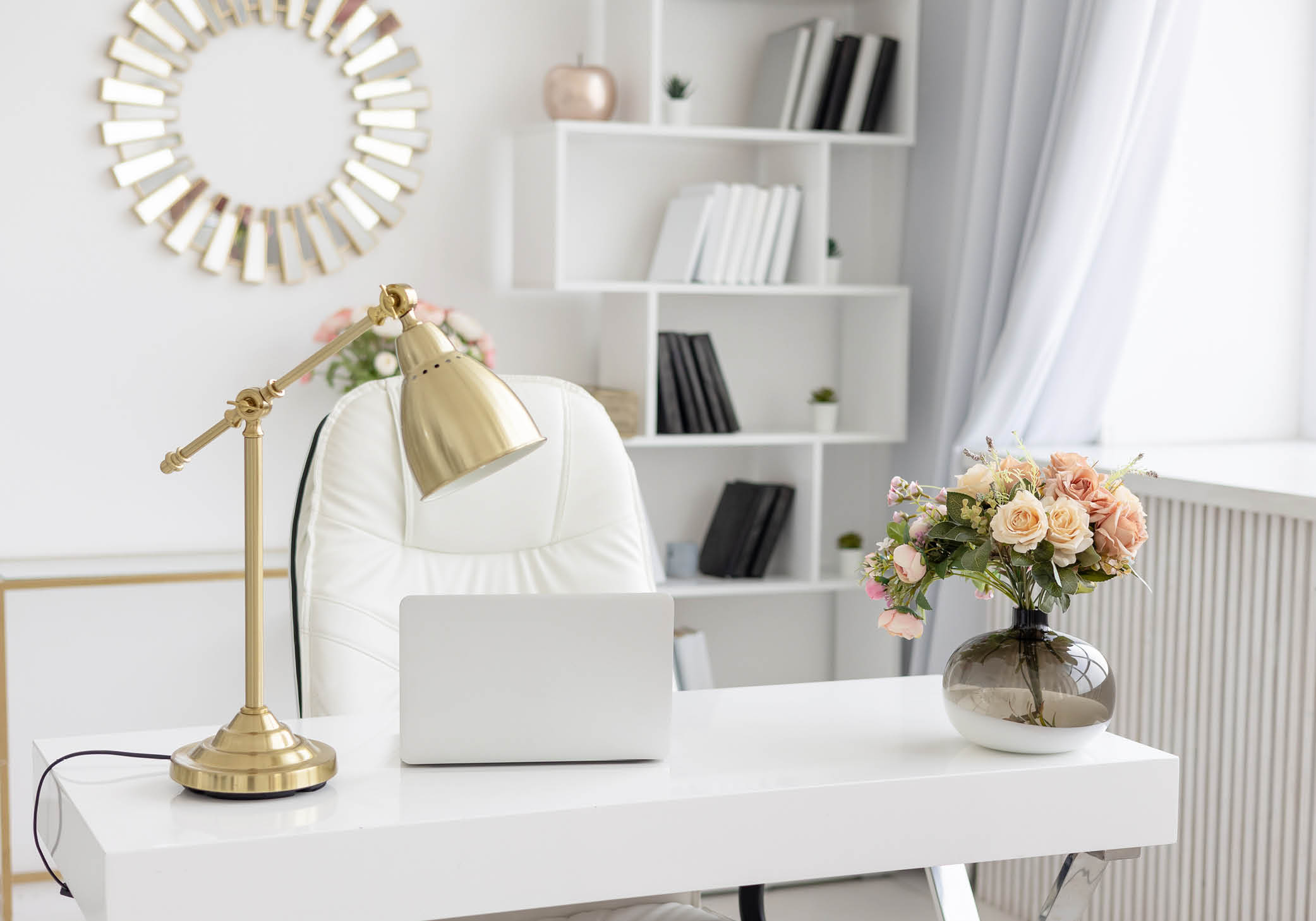Are you struggling to declutter and organize a home office? Over the last few years, many people had to pivot to work-from-home situations quickly. While the temporary setups worked wonders at first, you might find that you need more permanent solutions to keep your space free of clutter. And even if you have had a home office for years, you might be looking for affordable solutions for arranging your room to make it more inspiring and increase your productivity. Below, we reveal some of our favorite tips for how to organize a home office and create a space that you love.
Tame Paper Clutter
Before starting to organize a home office, you need to tackle the clutter. Seeing piles of paper and supplies crowding a workspace rarely sparks creativity. Not only is it pushing you to confine your activities to a smaller work area, but it’s also likely increasing your stress levels before you even begin your work for the day. Simply host Brandi Milloy tells readers at Real Simple that paperwork should be sorted into three distinct piles: “file, shred, do.” Material that needs to be kept should be filed. Anything you don’t need should be sent to the trash bin or shredded if it includes sensitive information. The last “do” pile represents your physical inbox. If you can handle whatever is in the pile right away, go ahead and do that and move on. If this paper represents a longer-term task, set it aside in an inbox to be tackled as soon as possible. The sooner you deal with these piles that are weighing down your office, the lighter you will feel.
Take Inventory
Now that the paper has been dealt with, you should have a better view of what your workspace currently holds. Whether you have a separate room or a dedicated area in your kitchen or living room, assess what items take up space. If toys, clothes, or gadgets have migrated onto or around your desk, put them back where they belong. When you organize a home office, you want that valuable real estate to be as free of extras as possible.

Arrange Your Desk
Now that your desk has been cleared of extraneous papers, supplies, and unwanted extras, you can focus on arranging it for maximum productivity and comfort. If your goal is to organize a home office for optimal feng shui, expert Ashley Cantley tells Real Simple that “the desk should face where you can see who is coming and going from the room.” Once your desk is optimally placed, you’ll want to keep it streamlined. If you have a steady flow of “to-do” paperwork, keep a physical inbox on your desk so that this paperwork is corralled and not misplaced. If your desk has a top drawer, this is a terrific spot to store daily-use items, like a wireless keyboard, notepads, pens, headphones, etc. Be sure you have a task light or adjustable floor lamp, and only keep supplies you are using for your given project by your side. Also, keep binders and file folders in a file cabinet or on a shelf rather than on your desk to eliminate crowding when you work.
Organize a Home Office Command Center
Do you have a group of key peripherals and supplies? Experts at The Spruce recommend creating a command center where items like your printer, files, cork board, shipping materials, and necessary supplies are located. The Magazine suggests that “the benefit of clustering essential items into a centralized area of your space means you have immediate access to critical paperwork and supplies, preventing them from being misplaced and cluttering other areas of your office.” A small table, rolling cart with locking wheels, or even a repurposed bookcase can be quickly turned into a dedicated space that will remarkably improve your home office’s flow and keep your area organized.

Include File Cabinets
Even if most of your files are kept in the cloud, you will likely still have paperwork you must keep. From project binders to tax returns, you want essential papers to have a secure home when you organize your office. If you have a lot of physical documents, Real Simple recommends choosing a three-drawer file cabinet that blends in with your overall design aesthetic.
The editors at The Spruce agree that having enough storage is the key to an organized home office. The Magazine applauds the idea of installing a wall of low cabinets if you have the budget and square footage to make it work. You can have bespoke cabinets built, but that may take more time and money than you want to spend. The Magazine suggests that as you arrange your new office, you should “consider stock kitchen cabinets from a home improvement store that can do the same job hiding office supplies and files.” Once the low row of cabinets are in place, “top cabinets with a length of countertop for extra workspace.”
Want a storage option that is filled with character as well as your paperwork? My Domaine recommends using vintage filing cabinets, which can be found at consignment shops, through restoration experts, and even at flea markets. Among their favorites are “early 20th-century solid oak cabinets with metal plates” and “a 1940s industrial-era file cabinet (like one by Steel Furniture Mfg. Co.) with brass hardware.”
Consider Decorative Bins
If you have watched any episode of Get Organized with The Home Edit, you know that decorative bins can be used to organize your entire home, from your pantry to your shoe closet. It’s no surprise then that decorative containers and attractive boxes with lids and labels are also being used to house the artifacts of projects in home offices. My Domaine is a fan of using multiple small organizers for supplies; “That way everything can have its own space, and you’ll always be able to find a pen without scrambling.”
Employ Shelving
If you don’t want a filing cabinet but need more storage than bins allow, My Domaine suggests hanging shelving instead. The Magazine reveals: “Whether you fill an entire wall with open shelving or simply employ one or two to hold your things, shelves can provide an easy place to store documents and display a few cherished items.” Even repurposing a bookcase can be “ideal for an office since it has open shelves to contain everything from paper trays to books, to stylish accents.” Just be sure to edit the shelving periodically to avoid overstuffing.
Does your home office also need to serve as a showroom? For those who need to display items, The Spruce remarks that a cubby system using decorative storage baskets might be the best solution for your needs. The Magazine explains: “The beauty of a cubby system is that it’s naturally neat, symmetrical, and perfectly proportioned to give the appearance of organization.”
Hide the Cords
If you have a spider web of cords spun through your home office, reaching a sense of calm in your new space will be difficult. Cord clips can hide desk cords by allowing you to run them down the legs of your desk. If your desk isn’t close to an electrical outlet, Simply host Brandi Milloy advises in Real Simple that people should “invest in a decent-size surge protector that has USB ports and plenty of outlets for all your devices,” which is then stored “in a cable organizer box” behind a desk. Milloy suggests that if you are concerned that the new setup might cause a tripping hazard, buy a cord cover that blends into your office décor. However, she cautions against “[hiding] your cords under a rug, as it’s a fire hazard.”

DIY a Cork Wall
If you want the ability to plot a project’s schedule or stages using visual cues, or you want to be able to see appointments or project details at a glance, creating a cork wall may be the perfect organizational tool for you. My Domaine reveals: “You can buy a roll of cork and DIY a whole wall, or you can get one sheet of cork and temporarily secure it” to display “your calendars, schedules, to-do lists, reminders, and quotes to keep you going.”
Surround Yourself with Inspiration
The last thing you want when you organize a home office is to create a bland cubicle. If you have put up your cork board or wall, pin to it any inspiring clippings or aspirational images you have been saving. The Spruce advises that by using the vertical space you have created, “you’ll give them a place to live instead of left in a forgotten pile of papers.”
Inspiring artwork is also key to improving your new home office’s feng shui. Expert Ashley Cantley remarks to Real Simple that on your journey toward a more inspiring workspace, you should “‘place images of people you admire and aspire to be like and use positive mantras painted or hanging on the wall.’”
Add Green Details
Don’t forget the green details. Incorporating thriving plants into your office will not only inspire you, but they may have a calming impact as you seek to create in the room. Cantley advises Real Simple that “any plant that has a rounded leaf,” “a succulent garden potted in a wood trough,” or “flowering plants (purple and red)” are good feng shui choices and make for beautiful accents for your newly organized home office.


